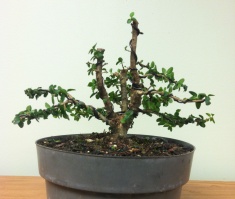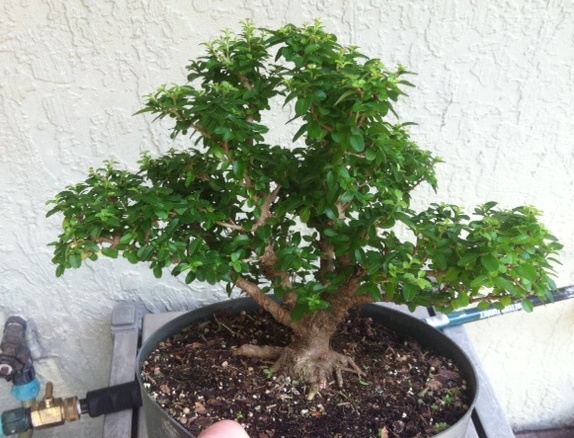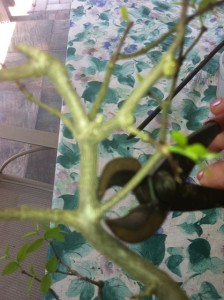Faster is better when it comes to internet speed but TIME is flying by too and since we cannot capture it in a bottle yet, we should manage our use of time if we want to accomplish anything. And since resolutions can fade away quickly, instead I am setting goals in hopes of reaping more results in 2013. Here are 13 Bonsai Goals for 2013 that any Bonsai enthusiast can adapt to meet their needs. Do them by month, mix them up, modify them to suit your needs, create your own, add sub-tasks, or jump to # 13. Just have fun with it!
1. Prepare (plan/organize): mind, garden area, display stands/benches, soil, pots, tools etc. Use the winter idle time to plan for the busy, beautiful springtime.
2.Try something new or different (step out of your box or comfort zone): Examples: really big tree, really small tree, penjing, suiseki, daiza, graft a branch, carve jin or shari, start from seed, air layer, create a forest, make your own bonsai pot, new style (windswept?), go collecting, take a class, create companion plants.
3. Photograph your trees/collection (or video): to record progress, before, after, styling changes, for insurance, in case of loss or theft, bugs or disaster, educational or personal reasons (i.e. bragging rights).
4. Journal the journey (record/document): in your own creative way, record the progress via journal, logs, calendar, blog, facebook, twitter, audio, drawings, whatever… Use beloved, old-fashioned media or new and trendy social media but just don’t dodge it, journal it!
5. Focus on your best trees (exhibit): help them be all they can be. Take a new look at them. Ask yourself questions about them. Pretend someone else owns them; what advice would you give? Treat them as if you plan to display or exhibit them. Be ready.
6. Expand or reduce your trees/collection: What is your preference? Ready to try new species? Focus on higher quality? Have lots of space or not much? Count your trees and pre-bonsai; it may surprise you. Pay it forward or ask a friend for cuttings. Trade species with your friends or club members.
7. Increase Knowledge (strain your brain): read a good bonsai book, search the internet, learn horticulture, take a workshop or intensive training, join a club, forum or attend a bonsai conference, experiment, learn from others, learn Japanese bonsai terms or scientific plant names of all of your trees.
8. Visit bonsai (travel): visit a friend with a backyard collection, a local or national bonsai exhibit, garden or arboretum, find a forest near you for natural examples, travel to Japan or China (for real or on the world wide web), find resources wherever you are or wherever you are going.
9. Exhibit your prize tree(s) (see #5): ask someone’s opinion, learn the art of display including companion plants, time the trimming, fertilizing and blooming to coincide with the display.
10. Focus on pots (composition): take a new look at your tree/pot combinations. Is it the right pot for the tree – quality/finish/color/shape/gender/size including depth? Is the tree located correctly within the pot? Would a slab or rock work better? What could or should be different? What do you like? Does it have enough negative space (like white space on a printed page)? What story does it tell?
11. Share your accomplishments (communicate) your goals, rewards and newfound knowledge with others. Hold yourself accountable. Find a mentor or be a mentor. Talk about bonsai.
12. Take a break (refresh/renew/rejuvenate): take a hike, find a quiet spot, relax, think about your bonsai, accomplishments of 2013 and goals for 2014! Yes, I said it — 2014 will be here before we know it. Time just will not stand still.
13. As always, ENJOY BONSAI every day, every year.
Think Bonsai, Think OrlandoBonsai.com

 Share on Facebook
Share on Facebook
![]()









